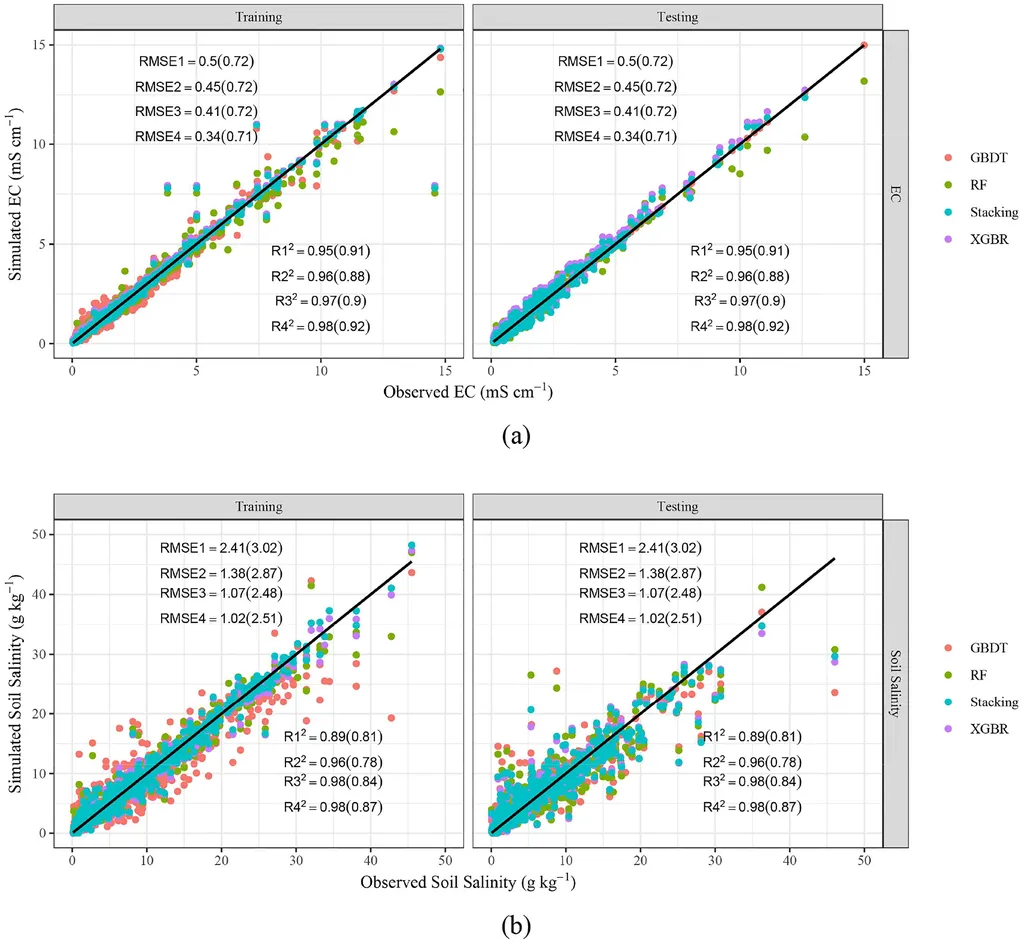In the heart of China’s Jiangsu province, researchers at Nanjing Agricultural University have developed a groundbreaking framework to tackle one of agriculture’s most pressing challenges: soil salinization. Led by Danyang Wang from the College of Resources and Environmental Sciences, the study published in *Resources, Environment and Sustainability* (which translates to *资源·环境·可持续性* in Chinese) offers a novel approach to understanding and predicting soil salinity dynamics, with significant implications for sustainable agriculture and climate resilience.
Soil salinization, a process where salt accumulates in the soil to detrimental levels, threatens global agriculture and ecosystems. Traditional methods of monitoring soil salinity have relied heavily on single-time-point remote sensing, providing limited temporal insights. However, Wang and her team have proposed a dynamic time warping-based model transfer-structural equation model (DBS) framework that integrates dynamic time warping (DTW), base model transfer, and structural equation modeling (SEM) to explore the regulatory mechanisms of environmental factors on soil salinity dynamics.
The DBS framework involves building a stacking-electrical conductivity (EC) base model, aligning multi-month data with DTW, and analyzing environmental factors through SEM. Key predictors identified were the normalized difference vegetation index (NDVI), normalized difference water index (NDWI), air temperature (AT), and precipitation. “NDVI reduced salt accumulation by lowering evaporation and stabilizing soil moisture, while NDWI reflected precipitation-driven dilution and leaching,” Wang explained. “Temperature influenced salinity indirectly by regulating NDVI and NDWI.”
The study found that NDVI and NDWI had direct effects on EC, while AT and precipitation acted indirectly. Model validation showed high accuracy and adaptability, with R-squared (R2), Nash–Sutcliffe efficiency coefficient (NSE), and Kling–Gupta Efficiency (KGE) values demonstrating significant performance gains after DTW optimization. The framework also showed strong migration capability across different soil types and vegetation covers.
The implications of this research are far-reaching, particularly for the energy sector. As the world shifts towards sustainable energy sources, the need for precision agriculture and climate resilience strategies becomes increasingly critical. “This study highlights the dominant role of climate-ecological interactions in salinity regulation and offers a robust, transferable method for multi-temporal salinity prediction,” Wang noted. “The findings provide critical insights for precision soil salinity management, sustainable agriculture, and climate resilience strategies, particularly in regions vulnerable to salinization.”
The DBS framework developed by Wang and her team represents a significant advancement in our understanding of soil salinity dynamics. By integrating multiple data sources and analytical techniques, the framework provides a comprehensive and accurate tool for predicting and managing soil salinity. This research not only contributes to the scientific community but also offers practical solutions for farmers, policymakers, and energy sector professionals working to mitigate the impacts of soil salinization and promote sustainable agriculture.

